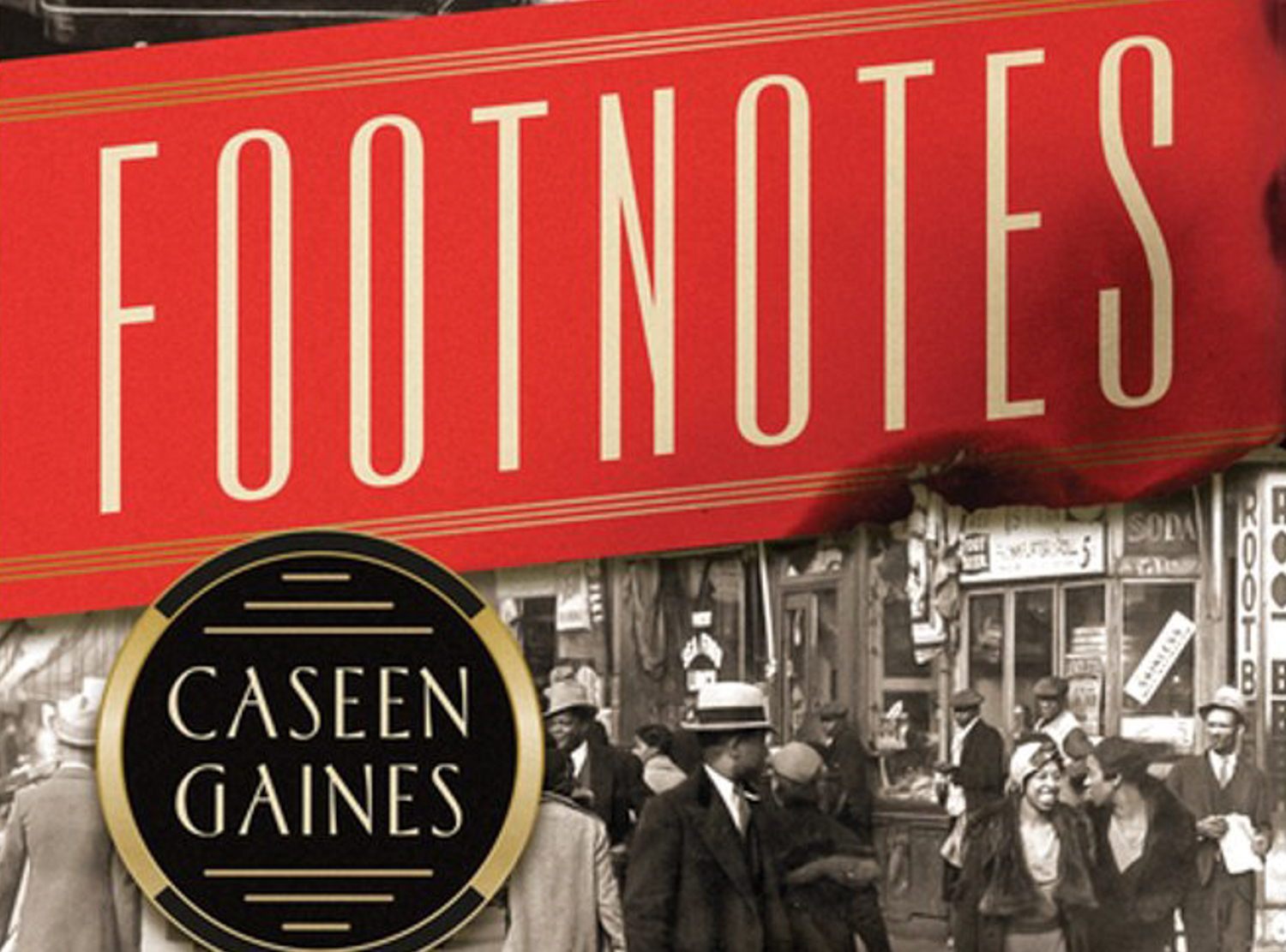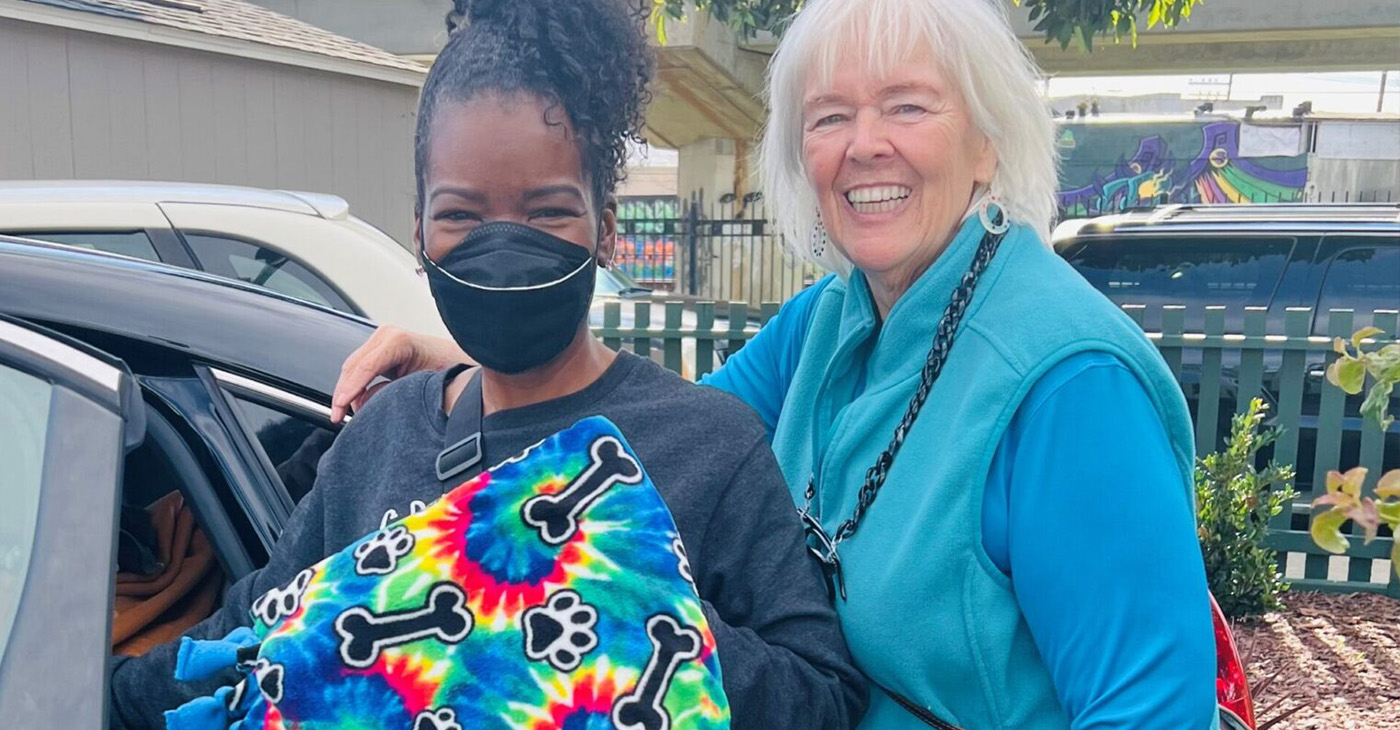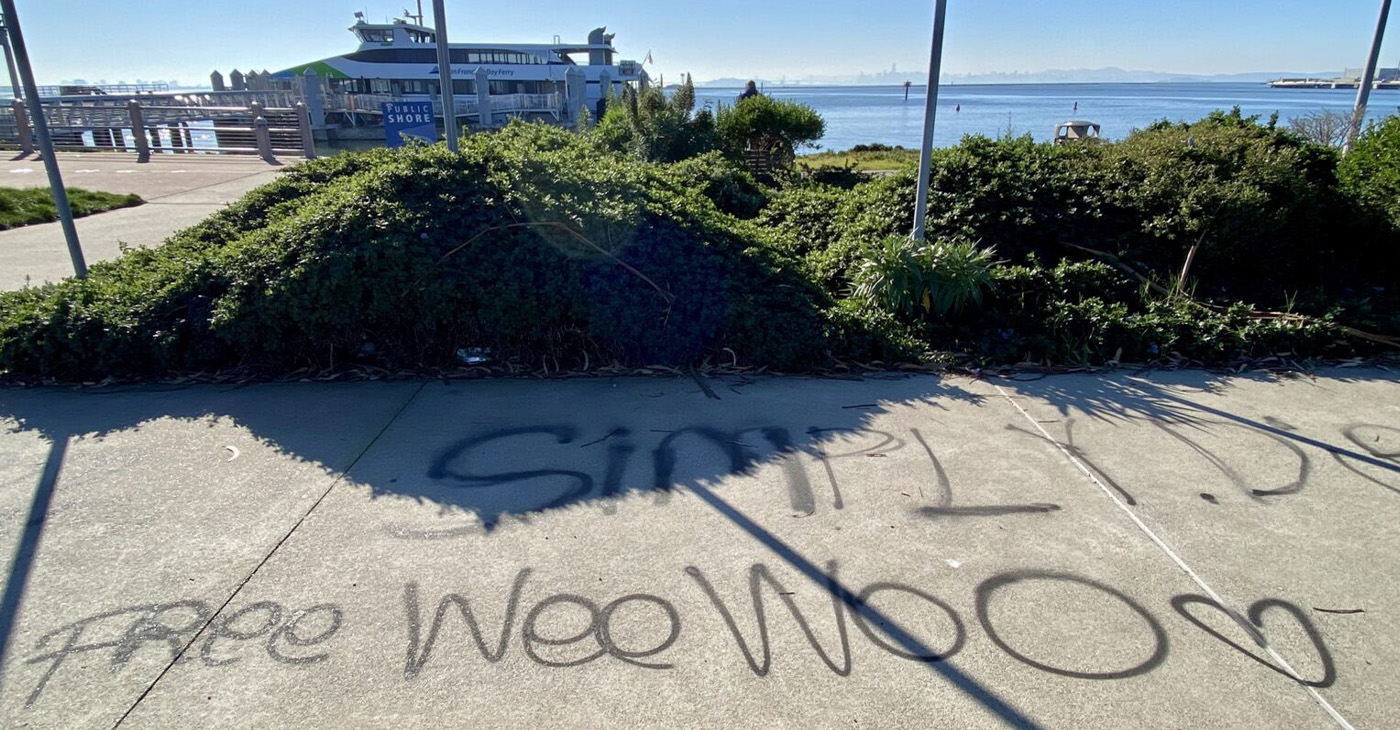Art
Broadway Success of Black Artists Revealed in ‘Footnotes’
Caseen Gaines explores the question, how long will your star stay aloft?

You can’t see where the roar is coming from.
But you can hear it, and that’s what matters. The role was made for you, you hit every line and note, the audience loved you – and now the roar of cheers and applause is yours.
How long does the standing ovation last? How hard do they clap? And, in her new book “Footnotes: The Black Artists Who Rewrote the Rules of the Great White Way”
Caseen Gaines explores the question, how long will your star stay aloft?
Growing up in an affluent Black neighborhood in Columbia, Tenn., Flournoy Miller had everything he could ever want – and when he was 9 years old, he wanted to be onstage. It was 1894, and his parents had taken him to see Sissieretta Jones, a famous soprano and one of the highest-paid Black entertainers of the day.
“Miller,” says Gaines, “was captivated.”
And yet, growing up, Miller knew that fame was a dangerous reach. Every Black entertainer seemed to know someone who was killed by white folks for no reason, but once Miller met Aubrey Lyles in 1903 and “the two hit it off right away,” the warning was ignored.
Miller, in fact, was more determined than ever for fame, and the two developed a popular comedy act.
From the time he was a child, Noble Sissle loved to sing. Few things pleased him more than a chance to perform in church and, while it was expected that he would become a minister like his father, he grew more passionate about music.
When Sissle took a job in Baltimore, he met Eubie Blake, a talented pianist who grew up in a Godly house as a child and honed his talents at brothels as a teenager. They, too, became fast friends and eventual collaborators.
It’s a small world, and because they worked in the same industry, Miller and Lyles knew Sissle and Blake and there was mutual respect all around. They had kicked around the idea of working together on a show, but the idea didn’t coalesce until early 1921.
And, “with nothing but a handshake agreement..” says Gaines, “the quartet agreed to give it a shot.”
The nicest thing about “Footnotes” is this: you don’t have to be a theater-goer to enjoy it. You don’t ever have to have even seen a play. You can love this lively, sparkling book for no reason but just because.
Though it takes a while to get there and though it may not seem like it, the main subject of this book is the musical, “Shuffle Along.” Gaines seems to use this main feature as a backdrop as he wraps biographies, history, and everyday life around that century-old show to demonstrate how it came to be and why it was so important to Black culture.
There’s racism in this tale, of course, but also determination and a sense of opulence and grandeur, at times. It can be a feel-good story, but one that hurts, too.
Shakespeare said, “The play’s the thing” and so is “Footnotes.” If you love Broadway, history, or books on culture, it’ll make you roar.
“Footnotes: The Black Artists Who Rewrote the Rules of the Great White Way” by Caseen Gaines. c.2021, Sourcebooks $26.99 / higher in Canada 448 pages
Activism
Griot Theater Company Presents August Wilson’s Work at Annual Oratorical Featuring Black Authors
The performance explores the legacy of Pulitzer Prize-winning playwright August Wilson whose 10-play Century Cycle chronicles the African American experience across the 20th century, with each play set in a different decade. “Half a Century” journeys through the final five plays of this monumental cycle, bringing Wilson’s richly woven stories to life in a way that celebrates history, resilience, and the human spirit.

By Godfrey Lee
Griot Theater Company will present their Fifth Annual Oratorical with August Wilson’s “Half a Century,” at the Belrose on 1415 Fifth Ave., in San Rafael near the San Rafael Public Library.
The performance explores the legacy of Pulitzer Prize-winning playwright August Wilson whose 10-play Century Cycle chronicles the African American experience across the 20th century, with each play set in a different decade. “Half a Century” journeys through the final five plays of this monumental cycle, bringing Wilson’s richly woven stories to life in a way that celebrates history, resilience, and the human spirit.
Previous performance highlighting essential Black American authors included Maya Angelou, James Baldwin, and Lorraine Hansberry with Langston Hughes.
The play will be performed at 3:00. p.m. on Feb. 20, 21, 22, 27, and 28 at 7:00 p.m., and on Feb. 23 at 3:00 p.m.
For more information, go to griottheatercompany.squarespace.com/productions-v2
Activism
MLK Day of Service Volunteers Make Blankets and Art for Locals in Need
“Everyone has an opportunity to participate,” said Glenda Roberts, kinship support care program manager at CCYSB. “Our nonprofit organization and participants recognize how important it is to give back to the community and this is serving. As Dr. Martin Luther King, Jr. stated, ‘Everybody can be great…because anybody can serve.’”

By Kathy Chouteau
The Richmond Standard
The Contra Costa Youth Service Bureau (CCYSB) and Bethlehem Missionary Baptist Church (BMBC) are collaborating with a team of volunteers for a Dr. Martin Luther King, Jr. Day of Service, Monday, Jan. 20 that will wrap the community’s most vulnerable people in warm blankets and provide them with an uplifting gift of art.
Volunteers will kick off their activities at BMBC at 11 a.m., making blankets for the unhoused people served by the Greater Richmond Interfaith Program (GRIP) and art for those in convalescence in Richmond.
Others will get to work preparing a lunch of chili, salad, a veggie tray, and water for participants, offered courtesy of CCYSB, while supplies last.
“Everyone has an opportunity to participate,” said Glenda Roberts, kinship support care program manager at CCYSB. “Our nonprofit organization and participants recognize how important it is to give back to the community and this is serving. As Dr. Martin Luther King, Jr. stated, ‘Everybody can be great…because anybody can serve.’”
“People of all ages are welcome to participate in the MLK Day of Service,” said Roberts. Volunteers can RSVP via phone to Glenda Roberts at 510-215-4670, ext. 125.
CCYSB Boardmember Jackie Marston and her friends donated the materials and supplies to make the blankets and art projects. The nonprofit is also providing the day’s complimentary lunch, as well as employees to volunteer, under the direction of CCYSB Executive Director Marena Brown.
BMBC, led by Rev. Dr. Carole McKindley-Alvarez, is providing the facility for the event and volunteers from the church, which is located at 684 Juliga Woods St. in Richmond.
Located in Richmond, CCYSB is a nonprofit youth advocacy organization that serves eligible children, youth, and low-income families with a variety of wraparound services so they can thrive. Programs include academic achievement, youth mentorship, truancy prevention and direct response.
Art
Vandalism at Richmond Ferry Terminal Saddens Residents
Residents have been lamenting the destruction online. Ellen Seskin posted photos of the vandalism to the Facebook group, Everybody’s Richmond, on Jan. 12, saying she encountered it while out on a walk. “It was on the sidewalk, the street, the doors to the ferry, even in the art installation and the ‘stone’ benches,” she said. “I reported it but knowing how slow they are about getting things done — I just know that the longer you leave graffiti, the more likely they are to spray it again.”

The Richmond Standard
“This is why we can’t have nice things,” stated the post on NextDoor.
The post referenced images of graffiti at the Richmond Ferry Terminal. Not just on the terminal, but also on public artwork, on trail signs, on public benches and the boardwalk.
On Wednesday, the Standard stopped by to see it for ourselves. The good news was that it appears the graffiti on the terminal and on the artwork, called Changing Tide, have been cleaned for the most part. But graffiti remained abundant in the area around the relatively new ferry terminal, which opened to the public just six years ago.
Graffiti artists tagged benches and the boardwalk. Cars that had done doughnuts in the street marked the cul-de-sac just outside the historic Craneway Pavilion.
A ferry worker told us the graffiti had been there since before he started working for the ferry service about a week ago.
A member of the Army Corps of Engineers who did not want to be named in this report called the scene “sad,” as “they’d done such a nice job fixing it up.”
“It’s sad that all this money has been spent and hoodlums just don’t care and are destroying stuff,” he said.
It wasn’t immediately clear how soon the graffiti would be removed. The Standard reported the graffiti to the city’s graffiti abatement hotline. We were prompted to leave a message reporting the address and location of the graffiti.
Residents have been lamenting the destruction online. Ellen Seskin posted photos of the vandalism to the Facebook group, Everybody’s Richmond, on Jan. 12, saying she encountered it while out on a walk.
“It was on the sidewalk, the street, the doors to the ferry, even in the art installation and the ‘stone’ benches,” she said. “I reported it but knowing how slow they are about getting things done — I just know that the longer you leave graffiti, the more likely they are to spray it again.”
In the comment section responding to Seskin’s post, local attorney Daniel Butt questioned why there aren’t cameras in the area.
On Nextdoor, one resident suggested searching to see if the tags match any accounts on Instagram, hoping to identify the perpetrator.
On its website, the City of Richmond says residents should graffiti immediately call Public Works graffiti removal and/or Code Enforcement at 510-965-4905.
Kathy Chouteau contributed to this report.
-

 Activism4 weeks ago
Activism4 weeks agoOakland Post Endorses Barbara Lee
-

 Activism4 weeks ago
Activism4 weeks agoOakland Post: Week of March 28 – April 1, 2025
-

 Activism3 weeks ago
Activism3 weeks agoOakland Post: Week of April 2 – 8, 2025
-

 #NNPA BlackPress3 weeks ago
#NNPA BlackPress3 weeks agoTrump Profits, Black America Pays the Price
-

 Activism2 weeks ago
Activism2 weeks agoOakland Post: Week of April 9 – 15, 2025
-

 #NNPA BlackPress3 weeks ago
#NNPA BlackPress3 weeks agoHarriet Tubman Scrubbed; DEI Dismantled
-

 #NNPA BlackPress3 weeks ago
#NNPA BlackPress3 weeks agoLawmakers Greenlight Reparations Study for Descendants of Enslaved Marylanders
-

 #NNPA BlackPress3 weeks ago
#NNPA BlackPress3 weeks agoTrump Targets a Slavery Removal from the National Museum of African-American History and Culture




























































